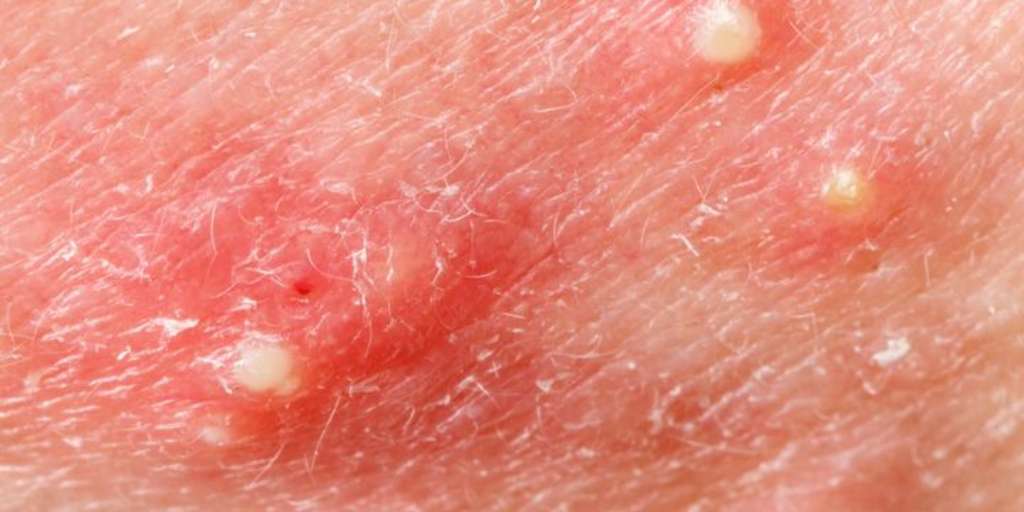51 Postpartum Care Essentials You'll Thank For
While everyone celebrates your little miracle, your body whispers for care and comfort.
Those first tender weeks are about more than sleepless nights and tiny fingers; they’re about honoring what your body has accomplished.
You’ve done something extraordinary, Mama.
Now comes the healing.
From soothing essentials that ease your discomfort to gentle products that nurture your recovery, having the right support makes all the difference.
Whether this is your first hello or your fourth, remember: caring for yourself isn’t an afterthought.
It’s how you prepare to love your baby with your whole heart.

After giving birth, your perineal area needs special attention to heal properly.
This sensitive area may be sore, swollen, or have stitches if you had a tear or episiotomy.
Gentle cleaning and soothing products can reduce discomfort and help prevent infection.
A peri bottle is a must-have for postpartum hygiene.
It helps gently clean the perineal area without the need for wiping, which can be painful after delivery.
Simply fill with warm water and spray while urinating to reduce stinging and promote healing.
This tool is especially helpful after vaginal births and is easy to use at home or in the hospital.
Witch hazel pads provide instant relief from swelling, irritation, and hemorrhoids.
These soothing pads are often placed directly on top of a maxi pad to cool and comfort the perineal area.
Naturally anti-inflammatory and gentle, witch hazel can also reduce bruising.
Many moms find them helpful during those first few weeks of tender postpartum recovery.
Cold packs or homemade padsicles offer cooling relief to sore, swollen tissue after childbirth.
These chilled items help minimize inflammation and numb pain in the perineal region.
Many moms create padsicles by soaking maxi pads in witch hazel and freezing them.
Using cold therapy several times a day can significantly ease discomfort and promote faster healing.
A sitz bath is a shallow bath designed to soothe the perineal area.
Sitting in warm water for 15–20 minutes a few times daily can relieve itching, soreness, and swelling.
It’s ideal for moms recovering from vaginal births or those dealing with hemorrhoids.
Sitz baths also help keep the area clean and improve blood flow, which aids in healing.
Perineal spray offers quick relief from burning, itching, and pain in the vaginal and rectal areas.
Available in herbal or numbing formulas, it’s sprayed directly onto the perineum for cooling comfort.
Many moms use it after every bathroom trip during the early recovery days.
It complements other care methods like pads and sitz baths for well-rounded relief.
Disposable mesh underwear is stretchy, breathable, and designed to hold large pads securely in place.
They’re ideal for the heavy bleeding that follows birth and are comfortable enough not to irritate sensitive areas.
Hospitals often provide them, but keeping extras at home is helpful.
Since they’re disposable, cleanup is easy during those messy first days.
Maxi pads are essential for managing postpartum bleeding, also known as lochia.
Overnight or extra absorbent varieties work best in the early days when flow is heaviest.
Unlike regular pads, these are thicker and longer, offering better coverage and protection.
Avoid tampons during this time to reduce infection risk and support natural healing.
Postpartum diapers, also called adult briefs, provide all-in-one absorbency and security.
Many moms prefer them over pads for the first few days due to their leak-proof design and comfort.
They’re especially helpful during nighttime or when moving around a lot.
Easy to wear and dispose of, they simplify hygiene when energy is low.
Healing foam, like the one from Frida Mom, offers immediate relief from perineal pain, itching, and swelling.
It’s made to be used alongside pads or liners and is safe for frequent use.
The foam coats the area gently and doesn’t require touching sore skin.
With ingredients like witch hazel or aloe, it’s both soothing and healing.
Epsom salts enhance sitz baths by helping reduce inflammation, easing muscle pain, and promoting perineal healing.
Just a small scoop in warm water creates a relaxing soak that can soothe sore areas and reduce hemorrhoid discomfort.
These salts are natural and safe for regular postpartum use, especially for moms seeking drug-free recovery options.

Breastfeeding is natural, but that doesn’t mean it’s always easy.
Your breasts will go through many changes as your milk comes in and you begin feeding your baby.
Soreness, engorgement, and leaking are common challenges new moms face.
Having the right supplies can make breastfeeding more comfortable and successful.
Nipple cream is essential for soothing cracked or sore nipples during the early days of breastfeeding.
Made from lanolin or natural ingredients like coconut oil or calendula, these creams create a moisture barrier and help heal fragile skin.
Safe for babies and moms, they can be applied after each feeding to keep the area comfortable and reduce irritation.
Breast pads help absorb leaking milk and keep your clothes dry and comfortable between feedings or pumping sessions.
Disposable versions are convenient for travel, while washable ones are eco-friendly and reusable.
They prevent embarrassing leaks in public and protect bras from staining, making them a practical and necessary item for nursing mothers.
Nursing bras are designed for easy breastfeeding access and comfort.
They usually feature clip-down cups or stretchy fabric to facilitate feeding without removing the entire bra.
A good nursing bra provides gentle support, adapts to breast size changes.
It helps moms feel more comfortable during those frequent feeding sessions.
Nursing tanks combine a built-in bra with tank-top coverage, offering comfort and easy breastfeeding access.
They’re perfect for layering or wearing around the house.
Nursing tanks help simplify feeding at night or in public.
Their soft, stretchy material supports your changing postpartum body while keeping things practical and stylish.
A breast pump allows moms to express milk for bottle feeding, relief, or to maintain supply.
Electric pumps are faster and great for frequent use, while manual pumps are quiet, portable, and ideal for occasional needs.
A reliable pump can make returning to work or handling engorgement much easier during the breastfeeding experience.
Milk storage bags are sterile, leak-proof containers used to safely freeze and store breast milk.
They’re pre-labeled and space-saving, fitting easily into freezers.
These bags allow you to build a milk stash, track pumped quantities, and maintain freshness.
Many brands are pump-compatible for direct expression into the bag, adding convenience.
Nipple shields are thin silicone covers that help babies latch if they’re struggling or if the nipples are sore or flat.
They offer a temporary solution while addressing latch issues and can relieve pain during nursing.
It’s best to use them under the guidance of a lactation consultant to ensure proper fit and effectiveness.
Breast cooling pads provide soothing relief from engorgement, swelling, and tenderness.
These pads can be chilled in the fridge and placed inside a bra to reduce inflammation and ease discomfort.
They’re reusable and mess-free, making them a simple solution for sore breasts during the early weeks of breastfeeding or weaning.
Breast hot packs are warm compresses that help improve milk flow and reduce clogged ducts.
They’re especially useful before nursing or pumping, as the heat encourages letdown and softens engorged breasts.
Many hot packs are microwave-safe and contoured for comfort, offering natural relief to help maintain a smooth breastfeeding experience.
A hands-free pumping bra securely holds breast pump flanges in place, allowing moms to express milk while multitasking.
It frees up your hands for reading, working, or caring for the baby.
Designed with adjustable straps and zippers, these bras fit most pumps and help make the pumping process more convenient and efficient.

What you wear after having a baby matters more than you might think.
Your body is healing, and regular clothes might feel uncomfortable or even painful against sensitive areas.
Soft, loose-fitting clothing that’s easy to get on and off will be your best friend in these early weeks.
Robes are a cozy and practical choice for postpartum wear.
They provide warmth and comfort while allowing easy access for breastfeeding or skin-to-skin contact.
With loose fits and soft fabrics, robes are ideal for lounging at home during recovery.
Many come with pockets and belts for convenience, making them both functional and stylish for new moms.
High-waisted postpartum underwear offers gentle abdominal support while accommodating large pads.
Designed with soft, breathable fabric, they reduce pressure on healing C-section or vaginal delivery areas.
These undies stay in place without rolling or digging, making them more comfortable than regular panties during recovery.
Many are reusable and washable for ongoing use.
Maternity leggings are soft, stretchy, and supportive, making them ideal for postpartum comfort.
High-waisted styles gently compress the belly while avoiding pressure on sensitive areas.
Whether worn for light movement or lounging, these leggings adapt to your changing body.
These are perfect for pairing with nursing tops or oversized sweaters.
Button-down shirts make nursing easier by offering quick breast access without needing to lift or remove your top.
They’re comfortable, stylish, and can be worn casually or out and about.
These shirts are especially convenient during nighttime feeds and offer a simple solution for discreet breastfeeding at home or in public.
Compression socks help improve blood circulation, reduce swelling in the feet and ankles, and prevent blood clots postpartum.
Especially useful after C-section delivery or extended periods of sitting, they provide support and comfort during recovery.
These snug-fitting socks can be worn throughout the day to reduce discomfort and encourage healthy blood flow.
Slippers or non-slip socks provide warmth and prevent slips on hospital or home floors.
Easy to slip on and off, they keep your feet cozy during those middle-of-the-night baby feedings.
Many include grippy soles for added safety and comfort.
Making them a postpartum must-have, especially during recovery from surgery or stitches.
Nursing nightgowns are loose, breathable, and designed with easy breastfeeding access.
Perfect for nighttime feeding sessions, they combine comfort with convenience.
Many styles include button fronts or nursing-friendly openings.
These gowns allow for easy mobility while keeping pressure off healing areas, making them ideal for postpartum rest.
Loose pajamas offer comfort and breathability, especially when covering sore spots, night sweats, and breastfeeding.
Choose lightweight, soft fabrics with roomy fits to avoid irritation.
They provide a relaxed fit that accommodates body changes, making diaper changes and nursing easier.
This added comfort is especially helpful during the days following birth.
A belly band or postpartum wrap provides gentle compression to support abdominal muscles after birth.
It can help stabilize the core, reduce swelling, and improve posture.
Many moms use wraps to feel more secure during movement and speed up recovery.
They’re especially helpful for those recovering from a C-section or with diastasis recti.
A nursing cover or scarf provides privacy while breastfeeding in public or around guests.
Designed with breathable fabric and adjustable straps, it ensures your baby stays comfortable while you feel secure.
Some covers double as car seat canopies or fashion accessories, offering multipurpose functionality for moms on the go.

Choosing to formula feed your baby requires its own set of essentials.
Having the right supplies ready makes feeding time smoother for both you and your baby.
Formula feeding allows others to assist with feedings, which can provide you with much-needed breaks for rest and recovery.
Formula is a reliable feeding option when breastfeeding isn’t possible or as a supplement.
It’s essential to choose a formula type recommended by your pediatrician to meet your baby’s specific nutritional needs.
Having it on hand ensures your baby is fed even during challenging nursing periods or when others help with feeding.
A sterilizer ensures that baby bottles, nipples, and pacifiers are thoroughly cleaned and free from harmful bacteria.
Available in electric or microwave versions, these devices save time compared to traditional boiling methods.
Sterilizing feeding items regularly reduces the risk of infections in newborns, whose immune systems are still developing.
A bottle brush is essential for cleaning bottles, nipples, and pump parts thoroughly.
Its long handle and soft bristles reach every corner to remove residue that regular sponges can’t.
Some brushes include nipple-specific attachments for better hygiene.
Keeping bottles clean with a dedicated brush helps prevent bacteria buildup and keeps your baby safe.
Newborn bottles are specifically designed for small feeding amounts and gentle flow.
They come in different nipple types to match your baby’s suckling ability and reduce gas or colic.
Using the right bottles helps make bottle-feeding smoother.
Especially in the early weeks when your baby is still adjusting to feeding patterns.
A bottle warmer gently and evenly heats milk or formula to body temperature.
It makes feedings more soothing for babies.
It prevents hot spots that can occur with microwaves and saves time compared to warming in water.
Bottle warmers are especially useful during nighttime feeds when convenience is key.
Burp cloths protect your clothes and furniture from spit-up during and after feedings.
Made from absorbent, soft fabrics, they’re placed over your shoulder while burping the baby.
Easy to wash and reusable, these cloths are a staple in any feeding routine and help keep messes under control.
A feeding pillow provides ergonomic support during nursing or bottle-feeding.
It lifts the baby to a comfortable height, reducing strain on your arms, shoulders, and back.
Shaped to wrap around your waist, it offers stability and comfort, especially during long feeding sessions.
Many moms also use it for tummy time or baby support later.
Bibs catch dribbles, milk, and spit-up to keep your baby’s clothes clean and dry.
Soft, absorbent materials prevent skin irritation, and easy-closure designs make them quick to put on or remove.
Bibs are especially helpful during and after feedings and reduce the need for frequent outfit changes.
A drying rack is designed to hold baby bottles, pump parts, and nipples upright for air drying.
It keeps feeding gear organized and off countertops, reducing the risk of contamination.
Some racks include separate sections for small items and a base that catches water.
It’s a clean, efficient way to dry daily essentials.
Measuring scoops and containers help portion out formula accurately for on-the-go feedings.
Airtight containers keep formula fresh and prevent clumping or contamination.
Pre-measuring formula in advance saves time during late-night or travel feedings.
It ensures your baby always gets the correct amount of nutrition.

While you’re healing, having the right baby items within easy reach can make a huge difference.
During these first weeks, you’ll want to conserve your energy and limit unnecessary movement, especially if you had a C-section.
These essential baby supplies aren’t just about convenience—they’re also important for supporting your recovery while still meeting your newborn’s needs.
Newborn-sized diapers are essential for managing your baby’s frequent changes in the early days.
Designed to fit tiny bodies snugly and comfortably, they often include a cutout for the umbilical cord stump.
These diapers help prevent leaks while being gentle on sensitive skin, making them a must-have for the first few weeks.
Sensitive skin baby wipes are made with gentle, hypoallergenic ingredients to clean messes without irritation.
They’re ideal for frequent diaper changes, face wipes, and quick cleanups.
Free from fragrances and harsh chemicals, these wipes help prevent diaper rashes and allergic reactions.
Making them safe and soothing for fragile newborn skin.
A baby wrap or carrier allows for hands-free bonding while keeping your baby close and secure.
Wraps are soft and flexible, ideal for soothing fussy infants and promoting attachment.
Structured carriers offer added support.
They’re great for multitasking, short walks, or calming a baby during a colicky spell.
Easy-to-change baby clothes, like zip-up onesies or kimono-style tops, save time and reduce stress during frequent outfit changes.
They should be soft, breathable, and allow for quick access during diaper changes.
Choosing clothes with minimal snaps or tags ensures your baby’s comfort and simplifies dressing for tired new parents.
Swaddles help newborns feel secure and sleep better by mimicking the snugness of the womb.
They reduce the startle reflex and keep babies warm without loose blankets.
Available in traditional or Velcro styles, swaddles promote longer sleep stretches.
Especially helpful during the early weeks of nighttime restlessness.
A changing pad provides a clean, cushioned space for diaper changes at home or on the go.
Many come with waterproof covers or liners to protect surfaces and make cleanup easy.
Some are foldable for portability, while others stay fixed on a nursery dresser.
It ensures the baby’s comfort and hygiene during every change.
Infant gas relief drops can ease your baby’s discomfort from trapped gas and bloating.
Safe for newborns and often made with simethicone.
These drops break up gas bubbles to help babies burp or pass gas more easily.
They’re especially helpful during the adjustment period to formula or bottle-feeding.
A reliable baby thermometer is crucial for monitoring your newborn’s health.
Digital rectal thermometers are recommended for infants’ accuracy, but forehead and ear models offer convenient, non-invasive options.
Early detection of fever helps you respond quickly and consult your pediatrician when necessary, offering peace of mind.
Baby nail clippers are specially designed to safely trim sensitive nails without cutting skin.
Alternatively, soft mittens help prevent scratching, especially in the first few weeks when nails grow quickly.
Both items are essential for protecting your baby’s face and eyes from accidental scrapes during sleep or play.
Baby-safe laundry detergent is free from dyes, fragrances, and harsh chemicals that could irritate newborn skin.
It’s designed to gently clean clothes, blankets, and burp cloths without leaving residue.
Using this detergent for all baby items helps reduce the risk of rashes, allergic reactions, and skin sensitivities.
Pacifiers can provide comfort and help soothe fussy babies during the early postpartum period.
They satisfy the natural sucking reflex and may help some infants sleep better or settle between feedings.
Choose a pacifier that’s newborn-sized and BPA-free to ensure safety and proper oral development.
Many parents find them helpful for calming down during stressful moments.
As you cradle your precious little one, don’t forget to cradle yourself too.
Your body has done something miraculous, so honor it with the care it deserves.
Those postpartum essentials aren’t just items on a list; they’re your lifelines during the beautiful chaos ahead.
Be patient with yourself, mama.
Rest when you can, accept help graciously, and remember that healing takes time.
Your well-being isn’t selfish; it’s essential.
When you nurture yourself, you’re better equipped to nurture your baby.
This tender season will pass, but the foundation you build now will carry you through every milestone ahead.
to browse our other blogs for more useful information!













